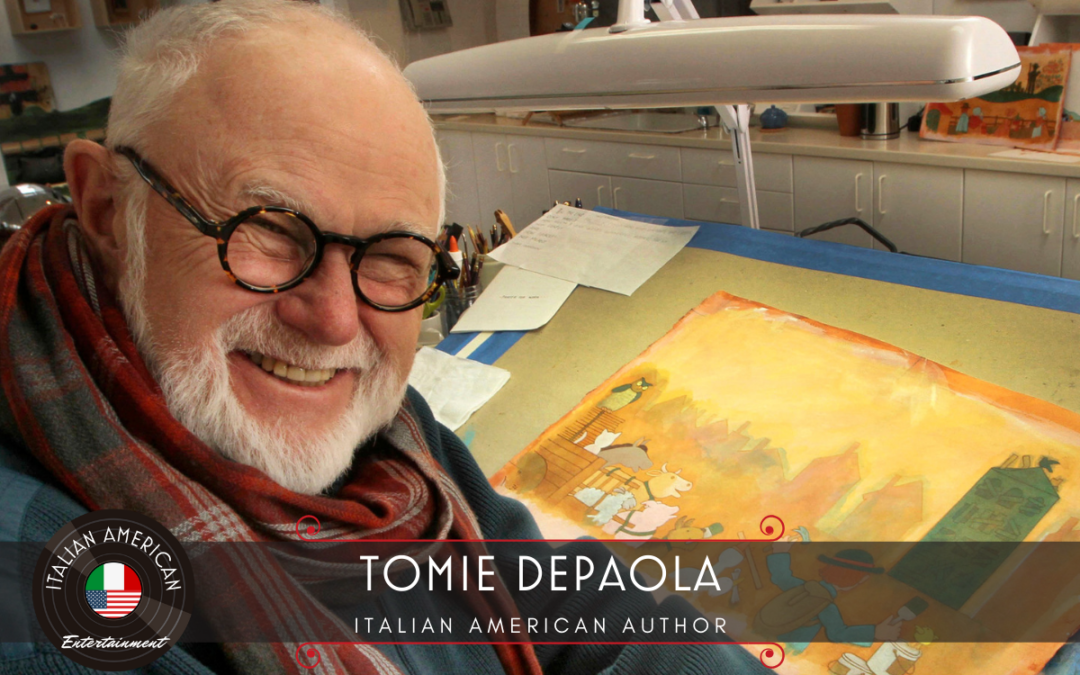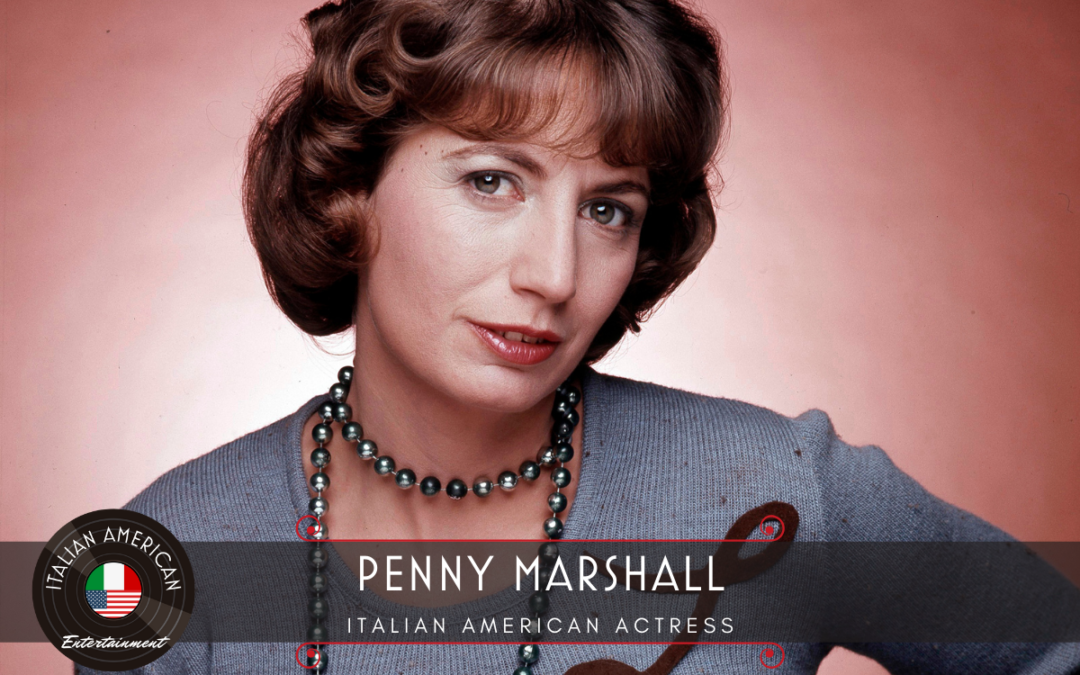
by Vince Chiarelli | Oct 21, 2020 | Blog, Musicians
Carmine Valentino Coppola was born in 1910 in New York City. He was the son of Maria Zasa and Agostino Coppola, who came to the United States from Bernalda, Basilicata. His brother was opera conductor and composer Anton Coppola.
Coppola played the flute. He studied at Juilliard, later at the Manhattan School of Music and privately with Joseph Schillinger. During the 1940s, Coppola worked under Arturo Toscanini with the NBC Symphony Orchestra. Then in 1951, Coppola left the Orchestra to pursue his dream of composing music. During that time he mostly worked as an orchestra conductor on Broadway and elsewhere, working with his son, filmmaker Francis Ford Coppola, on additional music for his Finian’s Rainbow.
Carmine contributed to the music performed in the wedding scene in The Godfather (1972). Later, his son called on him to compose additional music for the score of The Godfather Part II (1974), in which he and his father received an in-movie tribute with the characters Agostino and Carmine Coppola, who appear in a deleted scene from the young Vito Corleone flashback segments. Principal score composer Nino Rota and Carmine together won Oscars for Best Score for the film. He also composed most of the score for The Godfather Part III (1990). He made cameo appearances in all three Godfather films as a conductor.
Carmine and Francis together scored Apocalypse Now (1979), for which they won a Golden Globe Award for best original score. He also composed a three-and-a-half-hour score for Francis’ 1981 reconstruction of Abel Gance’s 1927 epic Napoléon. Carmine composed the music for The Black Stallion (1979), on which Francis was executive producer, and four other films directed by his son in the 1980s.
Carmine was the father of August Coppola, Francis Ford Coppola, and Talia Shire, and grandfather of Nicolas Cage, Sofia Coppola, Roman Coppola, Jason Schwartzman and Robert Schwartzman. Coppola died in Northridge, California at the age of 80 in 1991.

by Vince Chiarelli | Oct 19, 2020 | Blog
Angelo Siciliano was born in Acri, Calabria, Italy, on October 30, 1892. Eleven years later, he and his family traveled through Ellis Island and settled in Brooklyn, New York. As a young boy, Angelo was often teased and bullied about his small stature. He was inspired by statues of Greek and Roman gods that were housed in his neighborhood museum and also by bodybuilders who performed on Coney Island. During one of his visits to the beach town a group of older boys began to pick on Angelo. They pushed him to the ground and kicked sand in his face. This moment of humiliation changed Angelo as he pledged to bulk up and get revenge.
He began to devise a workout and “on a visit to the Bronx Zoo one day he had an epiphany…watching a lion stretch, he thought to himself, ‘Does this old gentleman have any barbells, any exercisers? …And it came over me…He’s been pitting one muscle against another!’” (Smithsonian Magazine). He began to develop his dynamic tension workout program and within months his body had been transformed. In 1921, he won the World’s Most Beautiful Man Contest and in 1922 he legally changed his name to Charles Atlas. That same year he won The World’s Most Perfectly Developed Man Award in New York City. The competition was discontinued as the promoter felt that no one could ever beat Charles.
The famous Charles Atlas print advertisements became iconic mostly because they were printed in cartoon form from the 1930s on, and in many comic books from the 1940s onwards – in fact continuing long after Atlas’ death. The typical scenario, usually expressed in comic strip form, presented a skinny young man being threatened by a bully. The bully pushes down the “97-pound weakling”. The young man goes home, gets angry, and sends away for the free Atlas book. Shortly thereafter, the newly muscled hero returns to the place of his original victimization, seeks out the bully, and beats him up. He is rewarded by the swift return of his girlfriend and the admiration of onlookers.
By the 1950s Charles Atlas had built himself a fitness empire. He boasted over one million followers worldwide including Rocky Marciano, Joe DiMaggio, David Prowse, Max Baer, Joe Louis and Robert Ripley. On December 23, 1972, Charles passed away from a heart attack. Charles Atlas Ltd. was founded in 1929 and, as of 2020, continues to market a fitness program for the “97-pound weakling”.
Sources: Wiki, OSIA

by Vince Chiarelli | Oct 17, 2020 | Blog, Television
Joy Mangano was born in 1956, in East Meadow, New York, to Italian-American parents. Mangano began inventing at an early age when, as a teenager working at an animal hospital in Huntington, New York, on Long Island, she dreamed up a fluorescent flea collar to keep pets safe. A product with a similar design was released the next year by Hartz Mountain. After graduating from Pace University with a degree in business administration in 1978, she held a variety of jobs, including waitress and airline reservations manager while raising her three children as a divorced mother.
In 1990 after growing frustrated with ordinary mops, Mangano developed her first invention, the Miracle Mop, a self-wringing plastic mop with a head made from a continuous loop of 300 feet of cotton that can be easily wrung out without getting the user’s hands wet. With her own savings and investments from family and friends, she made a prototype and manufactured 1000 units.
After selling the mop at trade shows and in local stores on Long Island, she sold 1,000 units on consignment to QVC. It sold modestly at first, but once QVC allowed Mangano to go on-air to sell it herself, she sold 18,000 mops in less than a half hour. Mangano incorporated her business as Arma Products, later renaming it Ingenious Designs. She sold Ingenious Designs to USA Networks, the parent company of the Home Shopping Network, in 1999. By the year 2000, the company was selling $10 million worth of Miracle Mops per year.
Mangano is a named inventor of 71 patent families and 126 distinct patent publications for her inventions. Some of her other inventions include Huggable Hangers, Forever Fragrant, Shades Readers, Clothes It All Luggage System, and many more.
Soon after she began appearing on QVC in 1992, Mangano began spending 120 hours a year on air. She appeared regularly on HSN and is considered the network’s most successful purveyor, with annual sales of more than $150 million. Her hourly sales regularly top $1 million. Mangano has also appeared in shorter commercials and infomercials for her company’s products. In 2005, Mangano was a judge on the cable reality show Made in the USA.
Mangano released her autobiography, Inventing Joy, in 2017. The 2015 film Joy was loosely based on her life. Jennifer Lawrence was nominated for the Academy Award for Best Actress for her portrayal of Mangano.
Source: Wiki

by Vince Chiarelli | Oct 16, 2020 | Authors, Blog
Thomas Anthony “Tomie” dePaola was born on September 15, 1934, in Meriden, Connecticut, to Joseph and Florence May DePaola. His mother read to Tomie from the time he was in diapers; cementing his love for books. When he was only four years old, he was certain that he would grow up to be an author and illustrator. Following his graduation from high school, he enrolled at Pratt Institute in Brooklyn, New York, where he graduated in 1956 with a Bachelor of Fine Arts.
After graduating from college, Tomie entered a Benedictine Monastery in Vermont for six months. He designed fabrics, Christmas cards, and liturgical art. In 1962, he began his teaching career at Newton College of the Sacred Heart in Massachusetts. Still holding on to his dream of becoming an author and illustrator, Tomie was asked to illustrate the book Sound in 1965. A year later, he published his own book, The Wonderful Dragon of Timlin.
By the 1970s, Tomie began to write and illustrate books more regularly. His own family, childhood and folk tales have inspired many of his books. Tomie has illustrated more than 250 books and has written over 100 of them. His stories have been translated into 20 different languages and have sold more than 15 million copies. His books – from the Strega Nona series to Nana Upstairs & Nana Downstairs to his many other short stories – continue to entertain and inspire children all over the world.
DePaola died on March 30, 2020, in Lebanon, New Hampshire.
Source: OSIA

by Vince Chiarelli | Oct 15, 2020 | Blog, Film, Television
Carole Penny Marshall was born in the Bronx, New York City, New York, on October 15, 1943, to Marjorie and Anthony “Tony” Masciarelli, later Anthony Wallace Marshall, a director of industrial films and later a producer. Her father was of Italian descent, his family having come from Abruzzo. Marshall’s father changed his last name from Masciarelli to Marshall.
Marshall first appeared on a television commercial for Head and Shoulders beautifying shampoo. In 1968, Marshall accepted an offer from her brother, Garry Marshall, to appear in a movie he had written and was producing, called How Sweet It Is. She landed another small role in the film The Savage Seven, as well as a guest appearance on the hit television series That Girl, starring Marlo Thomas.
In 1970, Garry Marshall became the executive producer of the television series The Odd Couple. The following year, Marshall was added to the permanent cast to play a secretary, Myrna, and held the role for four years.
Garry Marshall, creator and then part-time writer for Happy Days, cast Marshall and Cindy Williams to guest appear on an episode of the show. The installment, titled “A Date with Fonzie”, aired on November 11, 1975 and introduced the characters Laverne DeFazio and Shirley Feeney (played by Marshall and Williams, respectively). In that episode, Laverne and Shirley were a pair of wisecracking brewery workers who were dates for Fonzie (Henry Winkler) and Richie (Ron Howard). The pair were such a hit with the studio audience that Garry Marshall decided to co-create and star them in a successful spinoff, Laverne & Shirley (1976–1983).
At the encouragement of her brother, Marshall became interested in directing. While starring on Laverne and Shirley, she made her debut as a director and directed four episodes of that show as well as other TV assignments. In 1979, she directed several episodes of the short-lived sitcom Working Stiffs, starring Michael Keaton and James Belushi. She soon moved on to theatrical films, her first film being Jumpin’ Jack Flash (1986) starring Whoopi Goldberg.
Marshall directed several successful feature films from the mid-1980s onwards, including Big (1988) starring Tom Hanks (the first film directed by a woman to gross over US$100 million), Awakenings (1990) starring Robin Williams and Robert De Niro, A League of Their Own (1992) with Geena Davis, Tom Hanks, Madonna and Rosie O’Donnell, and The Preacher’s Wife (1996) starring Denzel Washington and Whitney Houston.
Marshall died in Los Angeles on December 17, 2018, at the age of 75.
Source: Wiki





